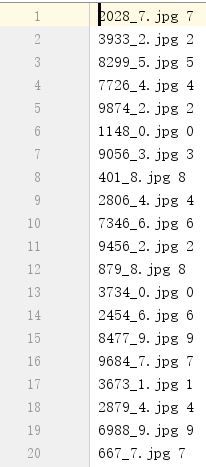- 自动化测试 —— Pytest fixture及conftest详解
程序员曦曦
软件测试pytest功能测试软件测试自动化测试程序人生职场和发展
前言fixture是在测试函数运行前后,由pytest执行的外壳函数。fixture中的代码可以定制,满足多变的测试需求,包括定义传入测试中的数据集、配置测试前系统的初始状态、为批量测试提供数据源等等。fixture是pytest的精髓所在,类似unittest中setup/teardown,但是比它们要强大、灵活很多,它的优势是可以跨文件共享。一、Pytestfixture1.pytestfix
- OpenSSH详解:构建安全远程管理的核心技术
ScilogyHunter
常见软件库安全OpenSSH
OpenSSH详解:构建安全远程管理的核心技术引言在数字化时代,远程管理服务器和数据传输的安全性至关重要。OpenSSH(OpenSecureShell)作为SSH协议的开源实现,通过加密通信、身份验证和数据完整性保护,彻底解决了传统工具(如Telnet、FTP)的明文传输风险。本文将从核心原理、配置实践到高级功能,全面解析OpenSSH的技术细节与应用场景。一、OpenSSH的核心架构与工作原理
- 火语言 RPA 的独特优势:为何它能脱颖而出?
IDFaucet
rpa
(一)低门槛上手:技术小白的福音与其他一些需要深厚编程基础才能操作的自动化工具不同,火语言RPA的语法设计极其亲民。它采用类似于自然语言的表达方式,通过简单的指令组合,就能实现复杂的自动化流程。例如,“打开Excel文件‘销售数据.xlsx’,选中A1到C10单元格区域,计算平均值并将结果填入D1单元格”,这样一段简单的描述,通过火语言稍加整理就能转化为可执行的自动化脚本。这意味着,即使你从未接触
- 利用AI与MySQL提升工业物联网健康监测的智慧水平——构建预测性维护的新纪元
墨夶
数据库学习资料1人工智能mysql物联网
在工业4.0和智能制造的大背景下,如何确保生产设备的高效稳定运行成为企业竞争力的核心要素之一。传统的事后维修方式已经难以满足现代制造业的需求,而基于人工智能(AI)的预测性维护系统则为这一挑战提供了全新的解决方案。今天,我们将深入探讨如何结合AI技术和MySQL数据库,打造一个智能、高效的工业物联网(IIoT)健康监测平台,助力企业在激烈的市场竞争中脱颖而出。一、为什么选择AI+MySQL?1.A
- MySQL中基于机器学习的自适应缓存热点识别优化策略——开启数据库性能新纪元
墨夶
数据库学习资料1数据库mysql机器学习
在数据驱动的世界里,数据库的性能直接影响到整个应用系统的响应速度和用户体验。随着业务量的增长和技术的发展,传统的缓存机制逐渐暴露出局限性。如何更智能地识别并利用热点数据进行缓存优化,成为提升数据库性能的关键所在。今天,我们将深入探讨一种创新的方法——基于机器学习的自适应缓存热点识别优化策略,并分享其在MySQL中的具体实现方案。为什么选择机器学习?传统上,开发者们依赖于手动配置或预设规则来决定哪
- 数据安全新纪元——多方安全计算与MySQL结合的隐私预算管理深度解析
墨夶
数据库学习资料1安全mysqlandroid
在当今数字化时代,数据已成为企业最宝贵的资产之一。然而,随着数据泄露事件频发,如何确保数据的安全性和隐私性成为了亟待解决的问题。传统的加密技术虽然能在一定程度上保护静态数据,但在动态数据分析过程中却显得力不从心。为了解决这一难题,隐私计算作为一种新兴的技术应运而生,它允许在不解密原始数据的前提下进行有效的计算和分析。本文将深入探讨如何利用多方安全计算(MPC)与关系型数据库MySQL相结合的方式实
- springCloud集成tdengine(原生和mapper方式) 其二 原生篇
张小娟
springcloudtdenginespring
mapper篇请看另一篇文章一、引入pom文件com.taosdata.jdbctaos-jdbcdriver3.5.3二、在nacos中填写数据库各种value值tdengine:datasource:location:yourLocationusername:rootpassword:yourPassword三、编写TDengineUtil文件下方util文件里面,包含创建database的方
- 股票市场的量化交易策略如何应对市场情绪变化?
云策量化
程序化炒股量化软件量化交易量化炒股QMT股票交易PTrade量化交易股票投资deepseek
推荐阅读:《程序化炒股:如何申请官方交易接口权限?个人账户可以申请吗?》股票市场的量化交易策略如何应对市场情绪变化?在股票市场中,量化交易策略是一种基于数学模型和算法的交易方式,它通过分析历史数据来预测未来价格走势,并据此制定交易决策。然而,市场情绪的变化对股票价格有着不可忽视的影响。本文将探讨量化交易策略如何应对市场情绪的变化,并提供一些具体的代码示例。一、市场情绪的重要性市场情绪是指投资者对市
- 股神系列:蒋菲的量化投资中,如何利用大数据优化模型?她的数据来源有哪些?
云策量化
量化交易量化软件量化炒股量化炒股QMT量化交易入门教程PTrade股票投资deepseek
推荐阅读:《程序化炒股:如何申请官方交易接口权限?个人账户可以申请吗?》标题:股神系列:蒋菲的量化投资中,如何利用大数据优化模型?她的数据来源有哪些?正文:在金融投资的世界里,量化投资以其科学、系统和客观的特点,成为了众多投资者追求的“圣杯”。而在量化投资领域,蒋菲以其独特的大数据量化投资模型而闻名。本文将深入探讨蒋菲如何利用大数据优化其量化投资模型,以及她的数据来源有哪些。一、量化投资模型的优化
- 算法笔记——前缀树、贪心算法(更新ing.......
不吃香菜的码农
左神算法笔记算法数据结构贪心算法leetcode堆栈
前缀树、贪心算法一、前缀树1.什么是前缀树2.如何生成前缀树二、贪心算法1.拼接字符串2.金条问题3.项目会议时间问题4.项目收益最大化4.随时获得数据流的中位数一、前缀树1.什么是前缀树前缀树一般指字典树这是指一种结构而不是一类题(注意信息是在树的路上)典型应用是用于统计和排序大量的字符串(但不仅限于字符串),所以经常被搜索引擎系统用于文本词频统计。它的优点是:最大限度地减少无谓的字符串比较,查
- Go 语言实用工具:如何高效解压 ZIP 文件
程序员爱钓鱼
golangios开发语言
在日常开发中,我们经常需要处理ZIP文件,例如从远程服务器下载压缩包后解压、备份数据或处理日志文件等。在本文中,我们将介绍一个使用Go语言编写的高效ZIP文件解压工具,并提供示例代码帮助你快速上手。代码实现以下是Unzip函数的完整实现,它可以将ZIP文件解压到指定的目录,并返回解压后的文件路径列表。packageutilsimport("archive/zip""fmt""io""os""pat
- Deepseek 个性化决策输出
meisongqing
DeepSeek个性化
Deepseek个性化决策输出:基于用户画像的定制化内容生成在教育场景中,通过构建动态用户画像与智能决策模型,教育数字人可基于学生水平实时调整讲解深度,实现精准化、个性化的学习支持。以下是核心实现框架与关键步骤:1.用户画像构建:多维度数据融合数据采集:显性数据:年龄、学科成绩、测试结果、学习时长、知识点掌握进度。隐性数据:交互行为(如答题犹豫时间、回放次数)、情绪识别(语音/表情分析)、认知负荷
- 基于 C++ 类的程序设计模式与应用研究
饼干帅成渣
c++开发语言
摘要C++语言凭借其强大的功能在软件开发领域占据重要地位,类作为C++面向对象编程的核心,承载着数据封装、代码复用等关键使命。本文深入剖析C++类的基础概念、核心特性及其在实际编程中的应用。通过详细阐述类的定义、成员构成、访问控制以及封装、继承、多态等特性,结合具体代码示例展示其在构建软件架构中的作用。同时,探讨C++类在应用中面临的常见问题及解决方案,为开发者高效运用C++类进行程序设计提供有力
- 【传输层协议】TCP协议详解(上)
望舒_233
Linux网络tcp/ip网络服务器
前言TCP(TransmissionControlProtocol,传输控制协议)是TCP/IP协议栈中的核心协议,作为互联网通信的基石,承担着确保数据可靠传输的重要职责。接下来我将分两篇文章,从四个部分带大家学习一些与TCP相关的基本概念和机制,首先我将带大家认识一下TCP报头字段的含义,然后了解TCP保证可靠性的一些机制,接下来是TCP进行效率优化的机制,最后是TCP与应用层相关的概念。本篇文
- chatgpt赋能python:Python怎么倒序列表
aijinglingchat
ChatGptpythonchatgpt人工智能计算机
Python怎么倒序列表列表是Python中最常用的数据结构之一,但在实际使用时,有时需要将列表进行倒序排列。Python提供了多种方法来实现这个需求,本文将简要介绍这些方法以及它们的使用场景。方法1:使用reverse()函数使用列表的reverse()方法是Python中最简单直接的方法来倒序列表。该方法会将原列表倒置。lst=[1,2,3,4,5]lst.reverse()print(lst
- “统计视角看世界”专栏阅读引导
赛卡
统计视角看世界信息可视化数据分析
根据文章主题和逻辑关系,我为您设计以下阅读引导方案:1.六西格玛基础2.帕累托图3.直方图4.散点图基础5.散点图高阶6.多变量可视化7.密度图进阶8.回归分析配套文字说明:入门基石(必读)《1.六西格玛遇上Python》→方法论总纲,建议优先精读基础三剑客(可并行)├─《2.帕累托图》→重点数据排序与决策├─《3.直方图》→数据分布核心工具└─《4.散点图》→数据探索第一视角高阶应用链(递进学习
- 吐血整理 python最全习题100道(含答案)持续更新题目,建议收藏!
Bejpse
面试学习路线阿里巴巴python开发语言pycharmredisjava-ee
最近为了提升python水平,在网上找到了python习题,然后根据自己对于python的掌握,整理出来了答案,如果小伙伴们有更好的实现方式,可以下面留言大家一起讨论哦~已知一个字符串为“hello_world_yoyo”,如何得到一个队列[“hello”,”world”,”yoyo”]test=‘hello_world_yoyo’使用split函数,分割字符串,并且将数据转换成列表类型print
- 密码学,算法在人工智能的实战利用
china—hbaby
人工智能密码学
在人工智能(AI)的快速发展中,数据安全和隐私保护成为了核心议题。密码学,作为保护信息安全的基石,其在AI领域的应用显得尤为重要。本文将探讨密码学在AI中的利用,并提供一些代码示例来展示其实际应用。密码学的概述即常用加密方式密码学(Cryptography)是数学和计算机科学的一个分支,它涉及保护信息的安全性和隐私性。密码学的主要目标是确保信息在传输过程中不被未授权的第三方读取或篡改,以及确保信息
- 双缓冲机制(Double Buffering)快速接收处理串口接收到的大量数据帧
wys99999
单片机stm32
这种方式通常称为双缓冲机制(DoubleBuffering),也被称为Ping-Pong缓冲。在嵌入式系统中,双缓冲机制常用于高效处理连续数据流,例如串口接收、DMA数据传输等。原理双缓冲机制的核心思想是使用两个缓冲区(数组)轮流接收和处理数据。具体流程如下:数据接收阶段:当一个缓冲区正在接收数据时,另一个缓冲区可以被处理。切换缓冲区:当接收缓冲区填满后,立即切换到另一个空闲缓冲区进行数据接收,同
- 2024年第五届MathorCup数学应用挑战赛--大数据竞赛思路、代码更新中.....
宇哥预测优化代码学习
1024程序员节
欢迎来到本博客❤️❤️博主优势:博客内容尽量做到思维缜密,逻辑清晰,为了方便读者。⛳️座右铭:行百里者,半于九十。本文目录如下:目录⛳️研赛及概况一、竞赛背景与目的二、组织机构与参赛对象三、竞赛时间与流程四、竞赛要求与规则五、奖项设置与奖励六、研究文档撰写建议七、参考资料与资源1找程序网站推荐2公式编辑器、流程图、论文排版324年研赛资源下载4思路、Python、Matlab代码分享......⛳
- c++介绍进程和线程区别
此刻我在家里喂猪呢
c++c++
进程是程序运行的实例,是操作系统分配的资源的基本单位,每个进程有自己独立的地址空间,数据,代码段,相互独立。特点:独立性:进程之间的资源相互独立,一个进程的崩溃不会影响其他进程。资源分配单位:每个进程有独立的内存空间,文件句柄,全局变量。进程间通信复杂:由于进程之间相互独立,进程通信需要额外的进制(如管道,消息队列,信号号,信号量,共享内存等)。进程切换开销大:切换进程时,操作系统要保存和恢复寄存
- c++介绍进程间的通信一
此刻我在家里喂猪呢
c++c++
进程的数据空间是独立的,私有的,不能相互访问,但是某些情况下进程之间需要通信来实现某些功能和交换数据。1.数据的传:一个进程需要将它的数据发送给另一个进程。2.共享数据:多个进程要操作共享数据,一个进程对数据修改,别的进程会立即看到。3.通知事件:一个进程需要向另一个或者一组进程发送消息,通知它们发生某种事件(如进程退出)。4.进程控制:一个进程需要控制另一个进程的运行。进程的通信分为六种。1道:
- 如何设计一个高可用的 Seata 集群?
码农技术栈
javaspringbootspringcloud微服务架构spring
——从零搭建永不宕机的分布式事务协调系统一、为什么需要高可用Seata集群?在分布式系统中,事务协调器TC是全局事务的“大脑”。一旦TC单点故障:灾难性后果:所有进行中的全局事务将卡死,业务完全不可用数据不一致风险:已提交的事务可能无法完成最终提交或回滚因此,构建高可用Seata集群是生产环境的必选项!二、Seata高可用架构设计核心要点1.TC集群化部署多节点部署:至少部署3个TC实例(奇数节点
- 前端技术学习记录:react+dvajs+ant design实现暴走计算器的页面重构(二)
大泡泡糖
学习记录reactjs前端gitwebstorm
前端技术学习记录:react+dvajs+antdesign实现暴走计算器的页面重构(二)前言定义Modelconnect起来更新state拥抱变化主题切换更换页面获取当前设备类型编写武学选择前言www定义Model完成UI后,现在开始处理数据和逻辑。dva通过model的概念把一个领域的模型管理起来,包含同步更新state的reducers,处理异步逻辑的effects,订阅数据源的subscr
- C++中的三个交换函数swap、swap_ranges、iter_swap
爱听雨声的北方汉
轻轻松松学C++c++
有三个交换函数,swap、swap_ranges、iter_swap其中需要注意的是容器和数组虽然都可以充当存放元素的数据类型,但是两个不同的概念,之间的区别是可以将容器看成基本的数据类型,可以像处理基本的数据类型一样来处理容器,比如直接赋值,或者当成参数传递给函数做形参;但是数组有所不同,数组是一个包括有很多元素的数据类型,不能像处理基本数据类型那样直接对数组进行操作,需要借助指针。所以之间的区
- React Router使用方法
魔云连洲
前端react.js前端前端框架
目录简介ReactRouter的三种使用模式声明模式数据模式框架模式ReactRouter7声明模式使用方法在入口文件引入BrowserRouter配置一个路由组件管理路由将路由组件引入App.tsx嵌套路由链接式路由导航\和\编程式路由导航简介ReactRouter是React的多策略路由器。在React应用中最新的ReactRouter7有三种使用模式,分别是声明模式、数据模式、框架模式。从声
- C#进阶之路:揭秘反序列化漏洞与解决方案
计算机学长
开发工具C#web安全网络c#
一、引言在现代软件开发中,数据的持久化和传输是至关重要的环节。C#作为一种广泛使用的编程语言,其序列化与反序列化机制在这两个环节中扮演着不可或缺的角色。序列化,是将对象的状态信息转换为可以存储或传输的形式的过程,比如将对象转换为字节流、JSON字符串或者XML格式。而反序列化则是将这些序列化后的数据重新转换回原始对象的过程。在实际应用中,当我们需要将对象保存到文件系统、数据库,或者通过网络在不同的
- 数据库设计20条军规:血泪教训换来的实战指南
潘多编程
数据库
优秀的数据库设计不是炫技,而是用最低的成本规避最痛的坑。在经历过数百次深夜故障复盘后,我总结了这些真正经得起生产环境考验的铁律:一、基础生存法则第三范式是起点不是终点订单表里的收货地址必须拆成独立地址表?先看业务场景:日均10万订单的电商系统,拆分会带来3表关联查询,不拆可能存储冗余。实战解法:高频查询字段适当冗余,低频字段严格范式化。命名规范要强制执行user_order_2023比tbl_us
- Redis桌面工具:Tiny RDM
微刻时光
微秒速递redis数据库缓存笔记
1.TinyRDM介绍TinyRDM(TinyRedisDesktopManager)是一个现代化、轻量级的Redis桌面客户端,支持Linux、Mac和Windows操作系统。它专为开发和运维人员设计,使得与Redis服务器的交互操作更加便捷愉快。TinyRDM提供了丰富的Redis数据操作功能,具备现代化的界面设计和良好的用户体验,使得Redis的管理和运维变得更加简单高效。2.核心功能极致轻
- C# 技术使用笔记:Asp.Net Core MVC 中控制器 Controllers 中返回数据使用详解
caifox菜狐狸
C#技术使用笔记c#笔记asp.netcoreViewResultJsonResultRedirect控制器
本文将深入探讨ASP.NETCoreMVC控制器中返回数据的多种方式,从基础的ViewResult到灵活的IActionResult,再到强大的ActionResult,我们将逐一剖析它们的使用场景、优缺点以及最佳实践。通过丰富的代码示例和详细的解释,帮助读者全面掌握控制器返回数据的技巧,从而提升开发效率,构建更加健壮和高效的Web应用程序。无论你是初学者还是有一定经验的开发者,本文都将为你提供有
- 面向对象面向过程
3213213333332132
java
面向对象:把要完成的一件事,通过对象间的协作实现。
面向过程:把要完成的一件事,通过循序依次调用各个模块实现。
我把大象装进冰箱这件事为例,用面向对象和面向过程实现,都是用java代码完成。
1、面向对象
package bigDemo.ObjectOriented;
/**
* 大象类
*
* @Description
* @author FuJian
- Java Hotspot: Remove the Permanent Generation
bookjovi
HotSpot
openjdk上关于hotspot将移除永久带的描述非常详细,http://openjdk.java.net/jeps/122
JEP 122: Remove the Permanent Generation
Author Jon Masamitsu
Organization Oracle
Created 2010/8/15
Updated 2011/
- 正则表达式向前查找向后查找,环绕或零宽断言
dcj3sjt126com
正则表达式
向前查找和向后查找
1. 向前查找:根据要匹配的字符序列后面存在一个特定的字符序列(肯定式向前查找)或不存在一个特定的序列(否定式向前查找)来决定是否匹配。.NET将向前查找称之为零宽度向前查找断言。
对于向前查找,出现在指定项之后的字符序列不会被正则表达式引擎返回。
2. 向后查找:一个要匹配的字符序列前面有或者没有指定的
- BaseDao
171815164
seda
import java.sql.Connection;
import java.sql.DriverManager;
import java.sql.SQLException;
import java.sql.PreparedStatement;
import java.sql.ResultSet;
public class BaseDao {
public Conn
- Ant标签详解--Java命令
g21121
Java命令
这一篇主要介绍与java相关标签的使用 终于开始重头戏了,Java部分是我们关注的重点也是项目中用处最多的部分。
1
- [简单]代码片段_电梯数字排列
53873039oycg
代码
今天看电梯数字排列是9 18 26这样呈倒N排列的,写了个类似的打印例子,如下:
import java.util.Arrays;
public class 电梯数字排列_S3_Test {
public static void main(S
- Hessian原理
云端月影
hessian原理
Hessian 原理分析
一. 远程通讯协议的基本原理
网络通信需要做的就是将流从一台计算机传输到另外一台计算机,基于传输协议和网络 IO 来实现,其中传输协议比较出名的有 http 、 tcp 、 udp 等等, http 、 tcp 、 udp 都是在基于 Socket 概念上为某类应用场景而扩展出的传输协
- 区分Activity的四种加载模式----以及Intent的setFlags
aijuans
android
在多Activity开发中,有可能是自己应用之间的Activity跳转,或者夹带其他应用的可复用Activity。可能会希望跳转到原来某个Activity实例,而不是产生大量重复的Activity。
这需要为Activity配置特定的加载模式,而不是使用默认的加载模式。 加载模式分类及在哪里配置
Activity有四种加载模式:
standard
singleTop
- hibernate几个核心API及其查询分析
antonyup_2006
html.netHibernatexml配置管理
(一) org.hibernate.cfg.Configuration类
读取配置文件并创建唯一的SessionFactory对象.(一般,程序初始化hibernate时创建.)
Configuration co
- PL/SQL的流程控制
百合不是茶
oraclePL/SQL编程循环控制
PL/SQL也是一门高级语言,所以流程控制是必须要有的,oracle数据库的pl/sql比sqlserver数据库要难,很多pl/sql中有的sqlserver里面没有
流程控制;
分支语句 if 条件 then 结果 else 结果 end if ;
条件语句 case when 条件 then 结果;
循环语句 loop
- 强大的Mockito测试框架
bijian1013
mockito单元测试
一.自动生成Mock类 在需要Mock的属性上标记@Mock注解,然后@RunWith中配置Mockito的TestRunner或者在setUp()方法中显示调用MockitoAnnotations.initMocks(this);生成Mock类即可。二.自动注入Mock类到被测试类 &nbs
- 精通Oracle10编程SQL(11)开发子程序
bijian1013
oracle数据库plsql
/*
*开发子程序
*/
--子程序目是指被命名的PL/SQL块,这种块可以带有参数,可以在不同应用程序中多次调用
--PL/SQL有两种类型的子程序:过程和函数
--开发过程
--建立过程:不带任何参数
CREATE OR REPLACE PROCEDURE out_time
IS
BEGIN
DBMS_OUTPUT.put_line(systimestamp);
E
- 【EhCache一】EhCache版Hello World
bit1129
Hello world
本篇是EhCache系列的第一篇,总体介绍使用EhCache缓存进行CRUD的API的基本使用,更细节的内容包括EhCache源代码和设计、实现原理在接下来的文章中进行介绍
环境准备
1.新建Maven项目
2.添加EhCache的Maven依赖
<dependency>
<groupId>ne
- 学习EJB3基础知识笔记
白糖_
beanHibernatejbosswebserviceejb
最近项目进入系统测试阶段,全赖袁大虾领导有力,保持一周零bug记录,这也让自己腾出不少时间补充知识。花了两天时间把“传智播客EJB3.0”看完了,EJB基本的知识也有些了解,在这记录下EJB的部分知识,以供自己以后复习使用。
EJB是sun的服务器端组件模型,最大的用处是部署分布式应用程序。EJB (Enterprise JavaBean)是J2EE的一部分,定义了一个用于开发基
- angular.bootstrap
boyitech
AngularJSAngularJS APIangular中文api
angular.bootstrap
描述:
手动初始化angular。
这个函数会自动检测创建的module有没有被加载多次,如果有则会在浏览器的控制台打出警告日志,并且不会再次加载。这样可以避免在程序运行过程中许多奇怪的问题发生。
使用方法: angular .
- java-谷歌面试题-给定一个固定长度的数组,将递增整数序列写入这个数组。当写到数组尾部时,返回数组开始重新写,并覆盖先前写过的数
bylijinnan
java
public class SearchInShiftedArray {
/**
* 题目:给定一个固定长度的数组,将递增整数序列写入这个数组。当写到数组尾部时,返回数组开始重新写,并覆盖先前写过的数。
* 请在这个特殊数组中找出给定的整数。
* 解答:
* 其实就是“旋转数组”。旋转数组的最小元素见http://bylijinnan.iteye.com/bl
- 天使还是魔鬼?都是我们制造
ducklsl
生活教育情感
----------------------------剧透请原谅,有兴趣的朋友可以自己看看电影,互相讨论哦!!!
从厦门回来的动车上,无意中瞟到了书中推荐的几部关于儿童的电影。当然,这几部电影可能会另大家失望,并不是类似小鬼当家的电影,而是关于“坏小孩”的电影!
自己挑了两部先看了看,但是发现看完之后,心里久久不能平
- [机器智能与生物]研究生物智能的问题
comsci
生物
我想,人的神经网络和苍蝇的神经网络,并没有本质的区别...就是大规模拓扑系统和中小规模拓扑分析的区别....
但是,如果去研究活体人类的神经网络和脑系统,可能会受到一些法律和道德方面的限制,而且研究结果也不一定可靠,那么希望从事生物神经网络研究的朋友,不如把
- 获取Android Device的信息
dai_lm
android
String phoneInfo = "PRODUCT: " + android.os.Build.PRODUCT;
phoneInfo += ", CPU_ABI: " + android.os.Build.CPU_ABI;
phoneInfo += ", TAGS: " + android.os.Build.TAGS;
ph
- 最佳字符串匹配算法(Damerau-Levenshtein距离算法)的Java实现
datamachine
java算法字符串匹配
原文:http://www.javacodegeeks.com/2013/11/java-implementation-of-optimal-string-alignment.html------------------------------------------------------------------------------------------------------------
- 小学5年级英语单词背诵第一课
dcj3sjt126com
englishword
long 长的
show 给...看,出示
mouth 口,嘴
write 写
use 用,使用
take 拿,带来
hand 手
clever 聪明的
often 经常
wash 洗
slow 慢的
house 房子
water 水
clean 清洁的
supper 晚餐
out 在外
face 脸,
- macvim的使用实战
dcj3sjt126com
macvim
macvim用的是mac里面的vim, 只不过是一个GUI的APP, 相当于一个壳
1. 下载macvim
https://code.google.com/p/macvim/
2. 了解macvim
:h vim的使用帮助信息
:h macvim
- java二分法查找
蕃薯耀
java二分法查找二分法java二分法
java二分法查找
>>>>>>>>>>>>>>>>>>>>>>>>>>>>>>>>>>>>>>
蕃薯耀 2015年6月23日 11:40:03 星期二
http:/
- Spring Cache注解+Memcached
hanqunfeng
springmemcached
Spring3.1 Cache注解
依赖jar包:
<!-- simple-spring-memcached -->
<dependency>
<groupId>com.google.code.simple-spring-memcached</groupId>
<artifactId>simple-s
- apache commons io包快速入门
jackyrong
apache commons
原文参考
http://www.javacodegeeks.com/2014/10/apache-commons-io-tutorial.html
Apache Commons IO 包绝对是好东西,地址在http://commons.apache.org/proper/commons-io/,下面用例子分别介绍:
1) 工具类
2
- 如何学习编程
lampcy
java编程C++c
首先,我想说一下学习思想.学编程其实跟网络游戏有着类似的效果.开始的时候,你会对那些代码,函数等产生很大的兴趣,尤其是刚接触编程的人,刚学习第一种语言的人.可是,当你一步步深入的时候,你会发现你没有了以前那种斗志.就好象你在玩韩国泡菜网游似的,玩到一定程度,每天就是练级练级,完全是一个想冲到高级别的意志力在支持着你.而学编程就更难了,学了两个月后,总是觉得你好象全都学会了,却又什么都做不了,又没有
- 架构师之spring-----spring3.0新特性的bean加载控制@DependsOn和@Lazy
nannan408
Spring3
1.前言。
如题。
2.描述。
@DependsOn用于强制初始化其他Bean。可以修饰Bean类或方法,使用该Annotation时可以指定一个字符串数组作为参数,每个数组元素对应于一个强制初始化的Bean。
@DependsOn({"steelAxe","abc"})
@Comp
- Spring4+quartz2的配置和代码方式调度
Everyday都不同
代码配置spring4quartz2.x定时任务
前言:这些天简直被quartz虐哭。。因为quartz 2.x版本相比quartz1.x版本的API改动太多,所以,只好自己去查阅底层API……
quartz定时任务必须搞清楚几个概念:
JobDetail——处理类
Trigger——触发器,指定触发时间,必须要有JobDetail属性,即触发对象
Scheduler——调度器,组织处理类和触发器,配置方式一般只需指定触发
- Hibernate入门
tntxia
Hibernate
前言
使用面向对象的语言和关系型的数据库,开发起来很繁琐,费时。由于现在流行的数据库都不面向对象。Hibernate 是一个Java的ORM(Object/Relational Mapping)解决方案。
Hibernte不仅关心把Java对象对应到数据库的表中,而且提供了请求和检索的方法。简化了手工进行JDBC操作的流程。
如
- Math类
xiaoxing598
Math
一、Java中的数字(Math)类是final类,不可继承。
1、常数 PI:double圆周率 E:double自然对数
2、截取(注意方法的返回类型) double ceil(double d) 返回不小于d的最小整数 double floor(double d) 返回不大于d的整最大数 int round(float f) 返回四舍五入后的整数 long round

